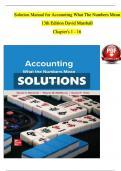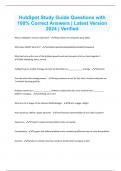Exam (elaborations)
Solution Manual for Accounting What The Numbers Mean, 13th Edition By David Marshall | Verified Chapter's 1 - 16 | Complete Newest Version
- Course
- Institution
Solution Manual for Accounting What The Numbers Mean, 13th Edition By David Marshall | Verified Chapter's 1 - 16 | Complete Newest Version Solution Manual for Accounting What The Numbers Mean, 13th Edition By David Marshall | Verified Chapter's 1 - 16 | Complete Newest Version Solution Manu...
[Show more]




